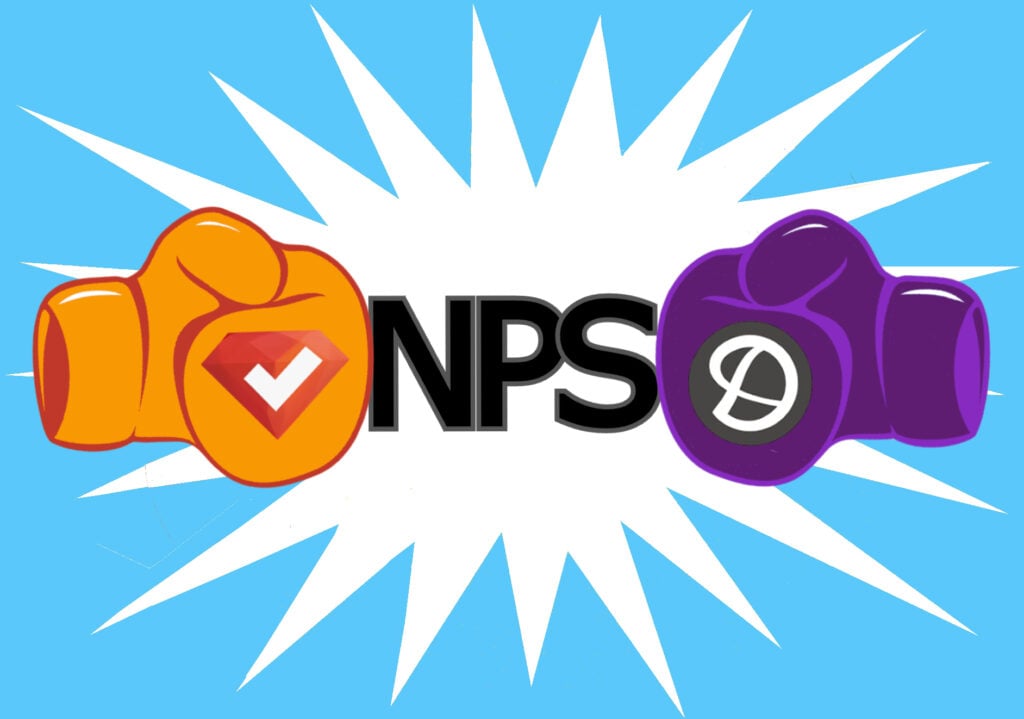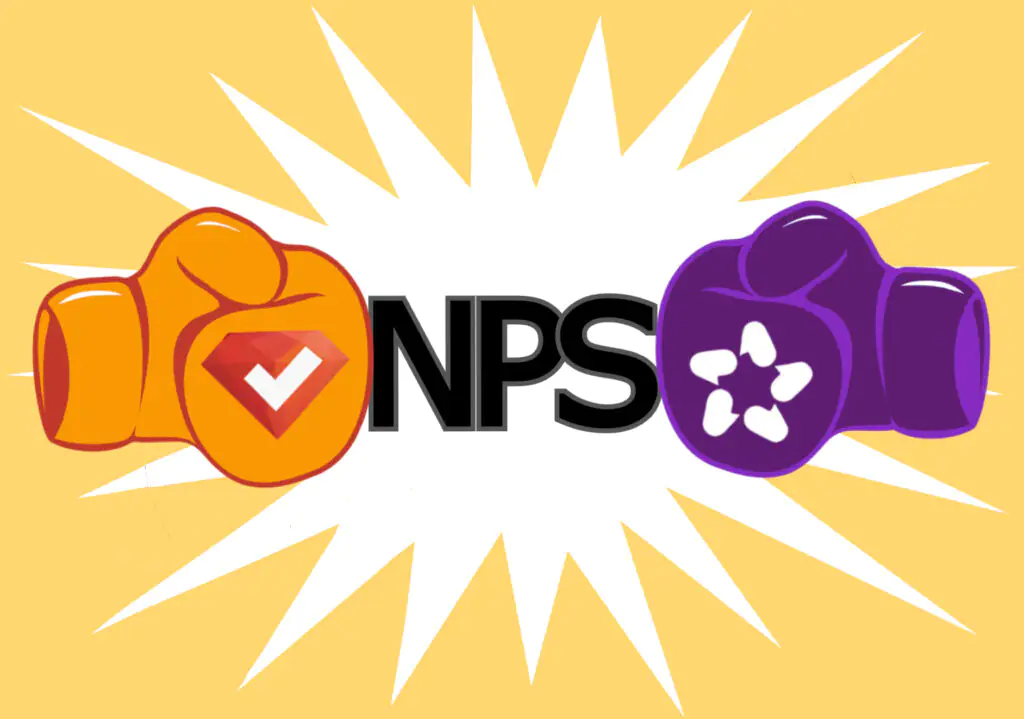Are customers happy with your product or service? Are they happy enough to tell others about it? How do they actually feel about your brand? These are all questions that business leaders need to ask themselves. But more importantly, they need to be asking their customers by conducting customer experience surveys.
Create your customer experience survey, form, or poll now!
What Is Customer Experience?
Customer experience, or CX, consists of everything from the customer’s first interaction with your company to their last. IT defines how your company meets (or doesn’t meet) customer expectations throughout all touchpoints in the relationship. These touchpoints may include:
- Interacting with your website
- Reacting to your advertising
- Speaking with customer service
- Placing an order
- Shipping and delivery
- Quality of product
- Follow-up support/returns
We also happen to love this definition of CX:
“CX is in many ways similar to a good marriage or partnership: good early experience has a great influence on relationships, and each interaction is either a debit or credit.” – Maggie Young, Customer Experience Evangelist
Importance of the Customer Experience
Delivering a good customer experience can make or break a brand. In fact, 96% of customers say that customer service is important in their choice of loyalty to a brand. In addition to meeting (and hopefully exceeding) customer expectations, here are some other eye-opening statistics to consider from Forbes. These demonstrate the importance of CX and its ability to drive revenue and brand loyalty.
- Companies that lead in customer experience outperform others by nearly 80%.
- 84% of companies that work to improve their customer experience report an increase in their revenue.
- 73% of companies with above-average customer experience perform better financially than their competitors.
Today, the majority of companies are competing on customer experience instead of just on product and price. Gartner even reports that almost 75% of organizations are spending more money on technologies that could help improve their customer experience. So, if you’re not investing in ways to up your CX game, your company could suffer.
Measuring Customer Experience through NPS Surveys
Want to know how to measure customer experience? One of the most common ways is through close monitoring of their Net Promoter Score®, or NPS®. According to the official Net Promoter website, “NPS measures customer experience and predicts business growth. This proven metric transformed the business world and now provides the core measurement for customer experience management programs the world around.”
Simply put, NPS is a customer loyalty number. It is calculated by asking customers if they would recommend your product/service to others on a 1-10 scale. This is generally followed up with additional questions. The resulting data helps companies improve their CX, building customer loyalty and brand advocates.
Why is NPS so popular? It offers simplicity. Depending on how respondents answer the questions, they’re considered one of the following:
- Promoters (score of 9 and 10), who are your most enthusiastic and satisfied customers and are the most likely to recommend your product or service to other people.
- Passives (score of 7 and 8), who don’t feel strongly one way or the other about your company and are unlikely to recommend your product or service to others.
- Detractors (score of 0 to 6), who had a bad CX and won’t recommend your company; they may even bad-mouth your product or service to friends and family.
5 Reasons to Conduct Customer Experience Surveys
As discussed, a good CX can significantly boost your bottom line! But there are more reasons to survey customers than revenue. Here are five reasons to conduct regular (generally quarterly or annual) CX surveys.
1. To understand customer loyalty.
Do you have a lot of promoters? Keep them happy, they are your brand ambassadors! Are your customers mostly passives? Put a little effort into turning them into promoters by giving them more attention. Do you have a lot of detractors? It’s unlikely you’ll turn them into promoters, but if you address their problems and try to make things right, you may at least be able to mitigate bad word-of-mouth or social media reputation damage.
2. To understand brand perception.
Brand perception is what customers think a product or service represents, not what a company says it does. Does the company feel it makes a high-quality product, but consumers perceive it as cheap? It might be time for some rebranding efforts or product revamping.
3. To identify touchpoints that need more attention.
Because CX encompasses every interaction your customer has with a brand, it could fare better in some areas than others. For example, perhaps the customer has a great online shopping experience and loved the product. But, it took over three weeks to arrive. Now, you know you have a good website and product, but need to do something to expedite the shipping process.
4. To set up new goals and develop new ideas.
You never know where the next great idea may come from. A good customer feedback survey has encouraged many companies to make changes for the better over the years. Customers may also tell a company about a new product or service that they’d like, which could turn into a profitable new niche for a business that’s paying attention.
5. To show customers that the company cares.
Most people like to give their feedback and like to be heard. By sending customer experience surveys, companies can demonstrate that customers have a voice. Often, if a customer is dissatisfied, the problem can be solved by listening to them and correcting the problem. And, if a customer is satisfied, you can find out why and double-down on those efforts. This is also a chance to congratulate team members who contributed to that satisfaction, boosting employee morale).
20 Customer Experience Survey Questions to Ask
Customer satisfaction questions will vary depending on your company, product, or service. Here are some common customer survey questions to get you thinking about what to ask on your survey.
- Overall, how satisfied or dissatisfied are you with our company?
- Which of the following words would you use to describe us?
- How did you become familiar with our product? (ad, review, friend, etc)
- How would you rate the quality of our products?
- What would you rate the quality of our customer service?
- How would you rate the speed of our service?
- What would you rate the value of our products based on price?
- Have we been responsive to your questions or concerns?
- How long have you been a customer of our company?
- Are you likely to purchase from us again?
- How likely are you to recommend us to a friend or colleague?
- Was your experience with our website a good one?
- How easy was it to find what you were looking for?
- Did you find the ordering process easy?
- Were you satisfied with the speed of shipping?
- Did you have to return or exchange your product?
- Was the return process well-managed?
- Were you treated with respect throughout the transaction?
- Do you feel valued as a customer?
- Would you be proud to say you are a customer?
Looking for questions specific to the Net Promoter Score? You’ll find that series of questions in our blog What is an NPS Survey & NPS Questions You Should Ask.
Conclusion
Today, customer experience is king. And while 80% of companies believe they deliver excellent CX, only 8% of customers think that they do. That’s a big gap in need of a bridge! By conducting customer experience surveys, business leaders can begin to better understand their customers and make improvements to keep them coming back and attract new ones. Ready to start your customer satisfaction or customer service survey? Check out our customer experience survey examples and customer experience survey templates here!
Do you regularly conduct customer experience surveys? Have any customer satisfaction questions to add to our top 20 list? Let’s hear about them in the comments!
Create your customer experience survey, form, or poll now!
Frequently Asked Questions (FAQs)
Customer experience, or CX, consists of everything from the customer’s first interaction with your company to their last.
One of the most common ways to measure customer satisfaction is through close monitoring of their Net Promoter Score®, or NPS®.
Brand perception is what customers think a product or service represents, not what a company says it does
To measure customer loyalty, determine brand perception, find areas of improvement, set new goals, and to let customers know you care.





